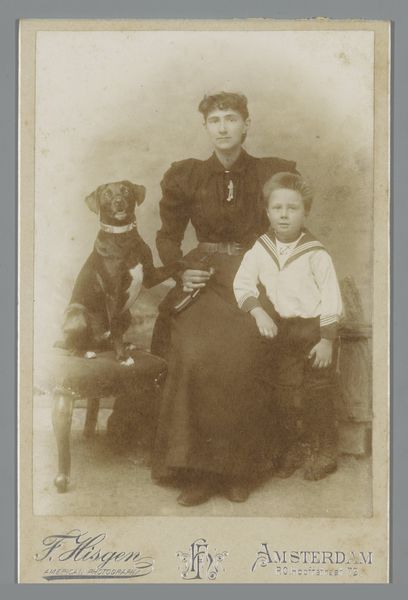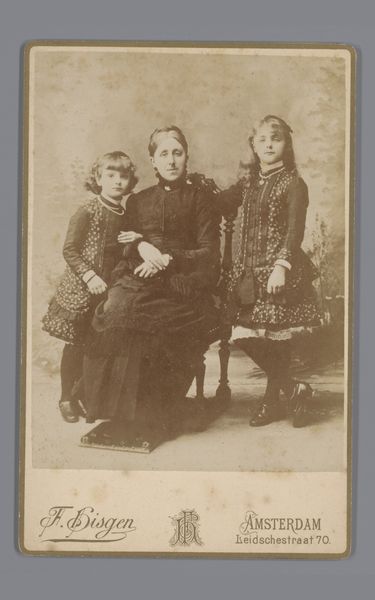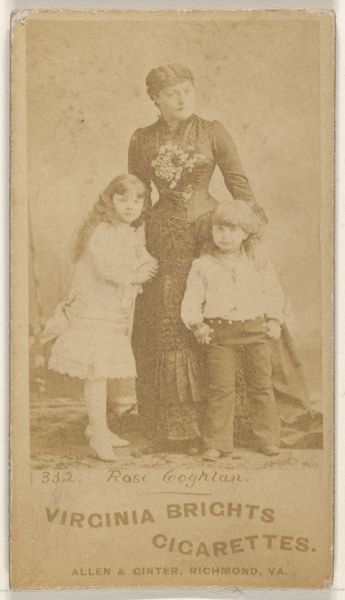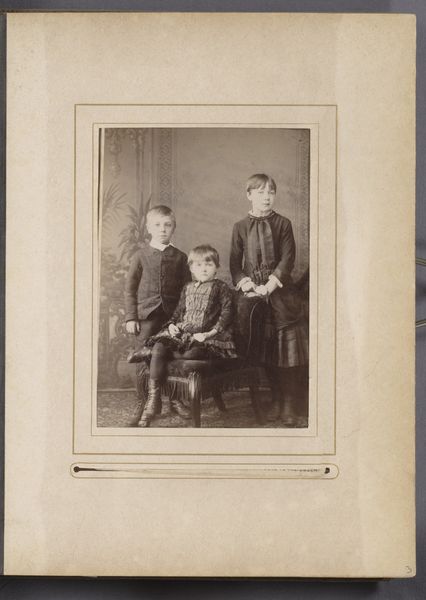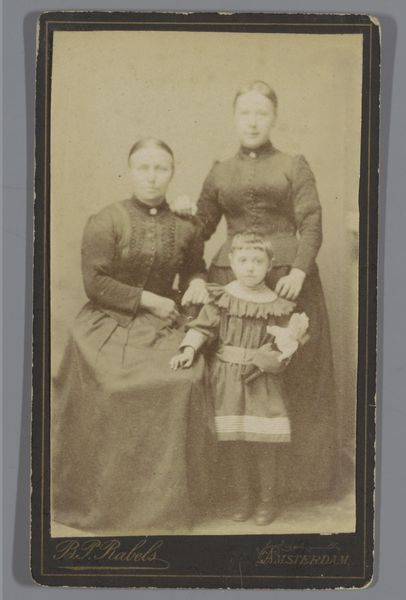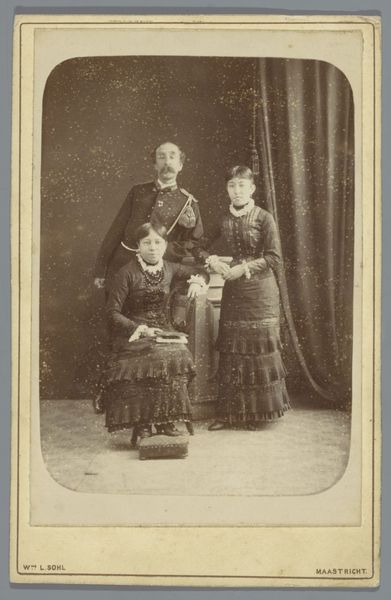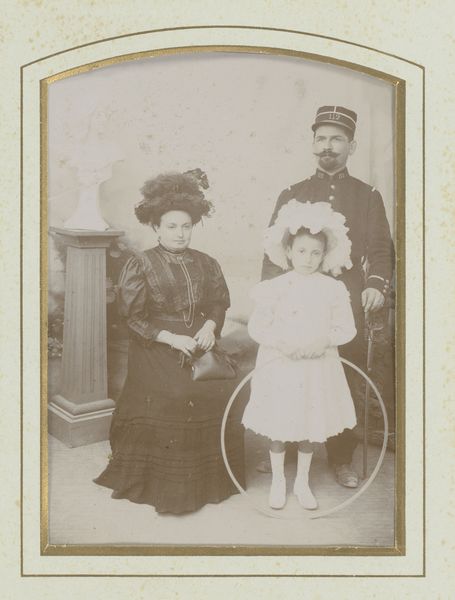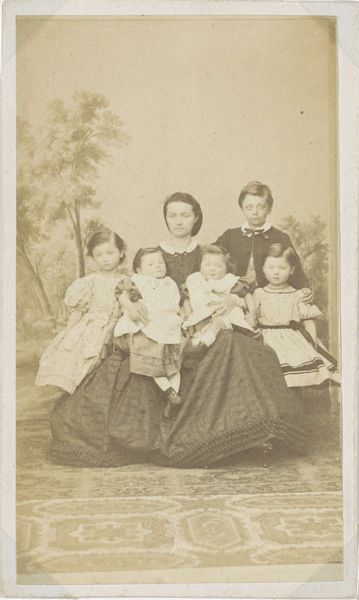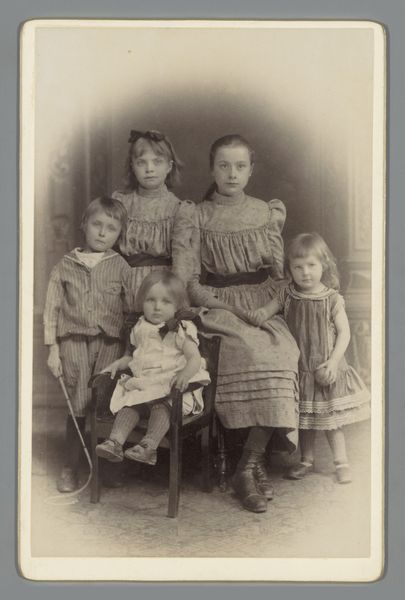
photography, gelatin-silver-print
#
portrait
#
dog
#
photography
#
child
#
coloured pencil
#
group-portraits
#
gelatin-silver-print
#
watercolor
Dimensions: height 141 mm, width 98 mm
Copyright: Rijks Museum: Open Domain
Curator: Well, here we have "Portret van een onbekende vrouw met twee kinderen en een hond," a gelatin-silver print that probably hails from somewhere between 1892 and 1902. The photographer was J.C. van der List. It’s got a wistful air to it, wouldn’t you say? Editor: It does indeed! There’s something in their gazes. It's so formally posed, yet the mood feels strangely unguarded. The dog almost seems the most present, the most alive in the frame. Is that melancholia I sense or something else? Curator: Maybe it’s the light…or the backdrop, which seems almost hand-painted and just a little blurry. The softness gives it a very intimate, dreamlike quality. I keep returning to that dog; is it a symbol of loyalty? Editor: It's undoubtedly meant to represent fidelity, domestic harmony, yes, the "faithful friend." It's an earthly counterpoint to the heavenly idea of motherhood presented by the woman and her two children, a subtle connection. Consider, too, the way they're arranged: a pyramidal composition anchoring the subjects together. Even the boy’s hand resting on his mother’s shoulder hints at continuity, generations. Curator: But does that domestic tableau fully succeed? Look closely— the boy's gaze is confident and knowing, yet his sister avoids your eye completely. Do you think that hints at unspoken stories? Editor: Absolutely. What’s omitted always intrigues more than what’s explicitly shown. Consider the stark formality of their attire. It underscores both social standing and societal expectations placed on this maternal figure. Motherhood wasn’t a role; it was a performance, meticulously curated, isn’t it always the case? The picture provides evidence and simultaneously shrouds the lived reality of women during that period. Curator: That tension, between representation and the unrepresented, is what really makes the piece, then. And the photograph becomes a cultural artifact rather than merely a sentimental family portrait. The staging opens doors for the cultural history and the symbols reveal individual nuances. Editor: Precisely. It prompts a reconsideration of both then and now.
Comments
No comments
Be the first to comment and join the conversation on the ultimate creative platform.
